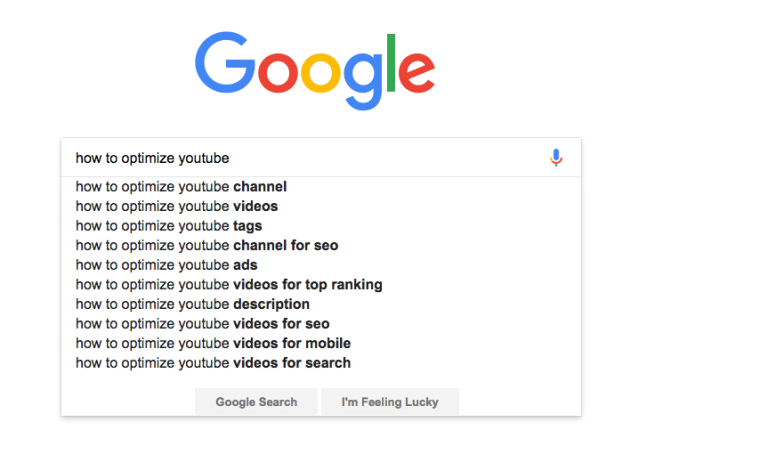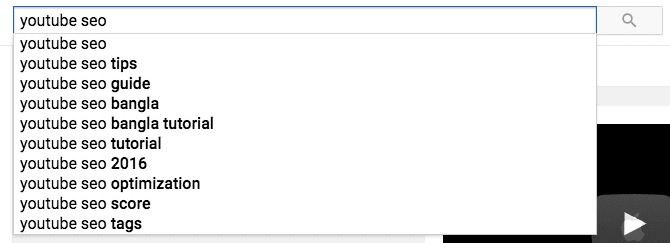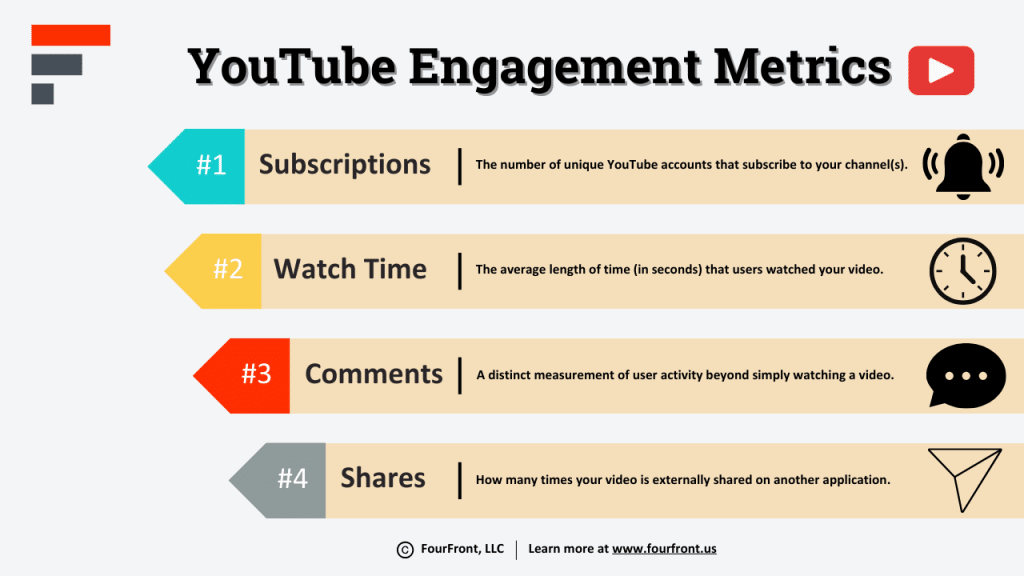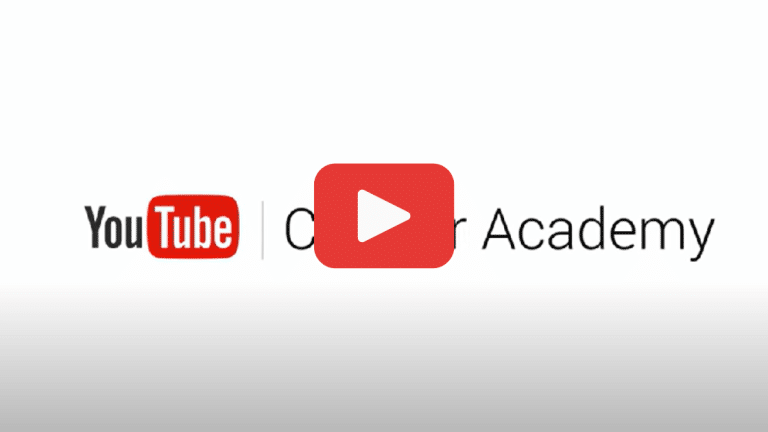This post was originally published in 2017. It was last updated by our team in March 2024.
In today’s digital landscape, mastering YouTube SEO is essential for expanding your online presence and reaching a wider audience. With millions of videos being uploaded daily, having a strategic approach is key to standing out. And given YouTube’s dominance in search rankings, integrating optimizing your videos with SEO is vital for making sure they have the greatest reach possible.
YouTube can be a very valuable resource if you or your company decides it fits your overall marketing strategy. It’s no longer exclusively an entertainment platform; it’s a powerful search engine in its own right. In fact, there are over 2.49 billion monthly active users on YouTube– more than any other video streaming platform. From tutorials to product reviews, users turn to YouTube for answers and solutions everyday. This shift in user behavior presents an ripe opportunity for content creators and businesses to capitalize on. However, without proper optimization, your videos risk getting lost amongst the noise.
What is YouTube SEO?
YouTube SEO is the process of optimizing your video content and channel with the intent of ranking well in YouTube’s search results. Much like Google, YouTube’s algorithm uses a variety of factors to determine where a video will rank for a specific search query. This includes:
- Metadata like thumbnails and captions
- Engagement (how many people viewed, commented, liked, etc.)
- Watch time
- Video title and description
It is important to note that YouTube’s algorithm also takes into account past user activity when choosing what videos to show in their list of search results. This ensures that each user feels that their results are more tailored to them and their interests.
How YouTube SEO Works
Understanding the fundamentals of YouTube SEO is key to increasing your videos’ visibility and reaching a wider audience.
Similar to other forms of content optimization, it begins with keyword research—finding the queries that your target audience is searching for. Incorporating these keywords naturally into your video title, description, tags, and transcript helps YouTube’s algorithm understand the relevance of your content.
Additional factors that will influence your video’s ranking include:
- Video watch time
- Engagement metrics (likes, comments, shares)
- Subscriber count
- Quality metadata
Consistency in posting quality content and fostering viewer engagement further strengthens your channel’s authority, enhancing its visibility in search results and suggested videos.
When Should You Start Making YouTube Content?
There’s more to success on YouTube than a good camera and enthusiasm. Does your product or service have a compelling visual element to it? Is there a part of your process, or a feature of your product, that lends itself better to “show” than to “tell”?
Food is a great example of a visual product. Not only do people enjoy looking at videos of food, but it helps inform their decision whether they want to use your service or not.
Another great example of visual content is start-up product offerings. If you have a product or service that has never been done before, you’ll have an easier time capturing your potential audience’s attention through a video than plain written text.
Having a product or service is not a requirement for creating videos on YouTube, or any other platform. Especially in the modern age of social media, video creation can stem from a variety of places like trends and educational content.
No matter which path you’re coming from, there are surefire ways to optimize your content to enhance its visibility.
How to Optimize Your Videos for YouTube
1. Brainstorm Content
Though the actual creation of content is a unique process, the brainstorming process should be grounded in SEO strategy.
Each specific YouTube video should be centered around a particular keyword or group of related queries, just like a landing page on a website. And there are plenty of keyword research tools that can help you find the keywords people are searching for related to your brand.
Consider all the relevant primary and secondary keywords for your brand. After some research, collect a list of long-tail keywords that have relatively high search volume.

Google Autocomplete is a quick method of finding related keywords and building a list of content ideas.

YouTube Instant is just as important as Google Autocomplete, with a stronger emphasis on what people are searching YouTube for.
With some quick research, you can find a nearly endless list of video ideas that have high demand and low supply.
2. Encourage User Engagement
Simply asking for engagement has shown a dramatic rise in likes and subscriptions for many YouTube channels. Brian Dean, from Backlinko, tried this and noticed a nearly 10x growth in engagement.
So, what are the engagement metrics that matter on YouTube? There are four general metrics that YouTube pays more attention to than others:

Subscriptions earned directly from the video is the greatest ranking signal. Leaving a quick annotation to subscribe or actually asking for it during the video is an easy, instant method to increase subscriptions and rise in the search results for all videos.
Watch time, also known as retention, is the average length of the video that people watch. Watch time is also a byproduct of views, which is the total number of times your video has been watched.
Comments measure how many users are engaging with your content beyond simply watching it, which is another signal for YouTube to decipher how useful your video actually is.
Shares count how many times your video is externally shared on another application like Apple’s iMessage or Facebook. This metric is typically lower in volume than views and comments, but is still a key engagement metric.
3. Utilize Text
Many content creators don’t realize that there are many opportunities for text optimization on YouTube. This includes the channel description, the video description, the video file, and the video title. Video descriptions are arguably one of the most important text elements for any video as they help support the content covered directly in your video.
When creating a description it’s important to:
- Write the most important part of your description in the first 100 characters, as this is the most YouTube will display.
- Include any target keywords relevant to the topic of your video.
- Including calls-to-action (CTAs) or crucial links you want your audience to click on.
4. Collaboration with Other YouTube Channels
In the same way backlinks give search value to a website, a collaboration gives value to a YouTube channel.
Though collaborating does not directly impact your YouTube SEO, your impressions for collaboration videos may spike based on the audience of the collaborating partner. Beyond that, though, this practice will also be a valuable networking tool to quickly place your channel at the same level as your peers.
5. Add Subtitles and Closed Captions
Adding subtitles and closed captions to your videos significantly enhances their YouTube SEO. This allows search engines to crawl and index the text content of your videos, making them more likely to appear in search results for relevant queries.
Subtitles and captions improve accessibility, broadening your audience to include those who are deaf or hard of hearing, as well as viewers who prefer watching videos without sound. This inclusivity not only boosts engagement but also increases watch time, a critical factor in YouTube’s ranking algorithm.
6. Use Custom Thumbnails
Using custom thumbnails for your YouTube videos is a powerful SEO strategy that can significantly increase click-through rates. A well-designed thumbnail entices users to click on your video among all of the other search results.
A thumbnail is your first opportunity to make an impression, so it should accurately represent the video content while being visually appealing. Thumbnails that stand out with vibrant colors, intriguing imagery, or compelling text overlays are more likely to grab attention, thereby improving your video’s visibility and viewership on YouTube.
7. Create Keyword-Optimized Playlists
Creating keyword-optimized playlists on YouTube is a strategic approach to boost your channel’s SEO and enhance viewer engagement. By grouping your videos into themed playlists, you not only make it easier for viewers to find content they’re interested in but also keep them watching longer.
Use descriptive, keyword-rich titles for your playlists to maximize their discoverability. This method not only improves the user experience by organizing content but also boosts the visibility of your videos in search results, contributing to a higher overall channel performance.
8. Add a Call-to-Action in Your Video and Video Description
By including a clear call-to-action (CTA), you prompt viewers to engage with your brand, whether it’s liking the video, subscribing to your channel, or going to your website.
This engagement tells YouTube’s algorithm that your video is relevant to viewers queries, consequently boosting its ranking in search results and suggested videos.
Additionally, a well-crafted CTA can encourage longer watch times and higher levels of audience interaction, both of which are important factors in YouTube’s ranking algorithm.
Take Your YouTube SEO to the Next Level
With these tips for effective YouTube SEO, you can gain views, maximize watch time and grow your audience. Many companies assume YouTube is not worth the time and effort compared to other social media, but with these strategies you can turn a simple social medium into a dynamic search engine to promote your brand.
If you’re struggling to strike the right accord with your video marketing strategy, FourFront’s experienced SEO specialists are here to help. Whether you need a better pulse on the interests of your target audience or assistance in optimizing your videos, we can get your videos to produce better ROI for you and your brand.












